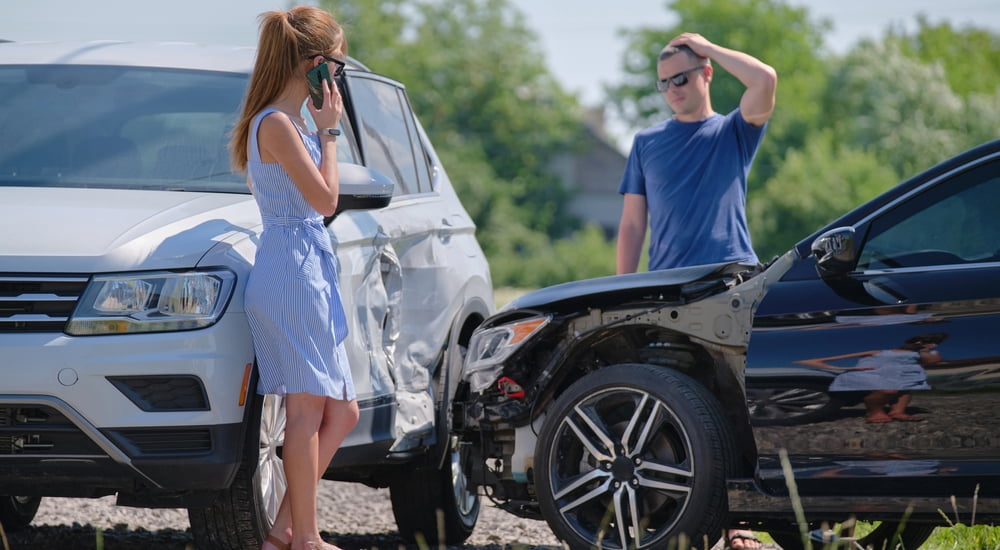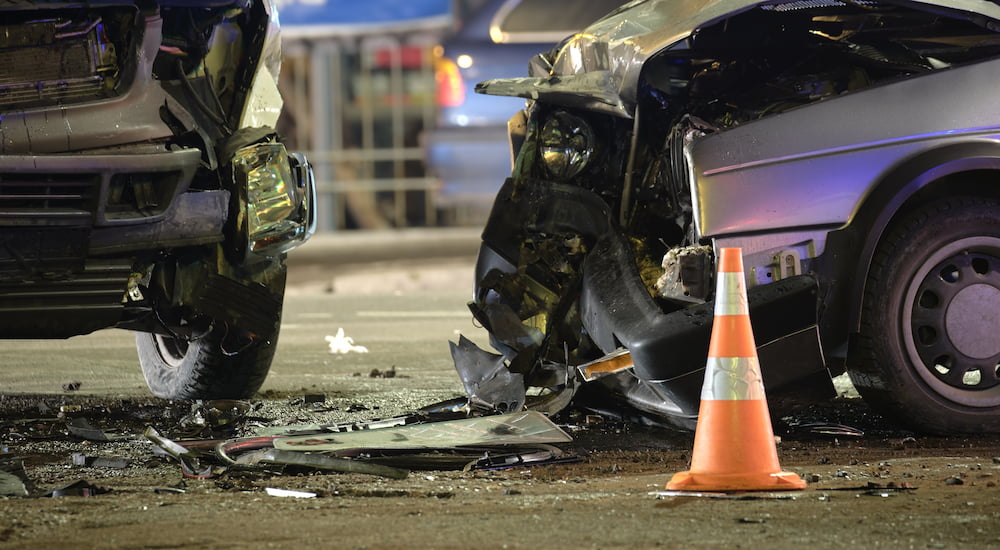You can use your turn signals, check your blind spots, and stay within the speed limit, but no matter how much you might prioritize safety when you’re behind the wheel, sooner or later you’re bound to end up in a traffic accident. We’re not trying to be pessimistic, but the numbers don’t lie. Every year, Americans are involved in six million auto accidents, with the average citizen experiencing three to four accidents over the course of their driving career.
Those first few moments after a crash can be critical when it comes to personal safety and finding a fair, equitable resolution between the parties involved. It’s all too easy to get a little distracted and forget what steps you’re supposed to take when your adrenaline is pumping. That’s where we come in. We’ve compiled a quick guide that outlines everything you need to remember in the aftermath of an accident. From ensuring safety and contacting the police to documenting the scene and trading insurance information, we’ll take you through those little tasks that could end up saving you a lot of trouble in the long run.
Check Yourself and Your Passengers
The number one priority after any accident is to check yourself for any injuries, everything from small cuts and scratches to broken bones or a concussion. If you think you’ve been seriously injured, don’t try to move or exit the vehicle unless you’re in immediate danger, such as a fire, as it can make the injury all that much worse. If there are any injuries, call 911 as soon as possible. If you don’t feel that you can move safely, try to get the attention of a bystander who can place the call for you. If you haven’t sustained any significant damage, the next step is checking on your passengers. Start with the youngest or most obviously injured passenger and contact your local emergency services if necessary.
Get to a Safe Place
If you smell gasoline, see fire, or think there might be the risk of an explosion, immediately exit the vehicle and get to a safe place as soon as possible. If your vehicle is still operational and there doesn’t seem to be any immediate danger, the next step is to get to a safe spot away from any other traffic. A small accident can easily turn into a pile-up, especially on the highway, so if you feel safe to drive, try pulling onto the shoulder while you await further help. If you have a roadside safety kit with lights or bright, reflective triangles, set these up to alert oncoming traffic to your presence. If not, turn on your four-way hazard lights. These lights and signals are especially important for any accidents that might take place after dark.
Call 911
Once the vehicle is safely off the road, it’s time to call the authorities. Even if there are no injuries that might require medical assistance, it’s always a good idea to call law enforcement after a crash. That way, the facts of the crash are documented, and it is difficult for other parties involved to change their story afterward. In some states, contacting the police may be legally required regardless of the severity of the accident, so make sure to familiarize yourself with the laws in your area. If no police are available and you still want to file a report, you can always visit your local police station after the fact.
Once the police arrive, answer any questions they might have and share every detail you can remember. Aside from helping to mediate any tension between the parties involved, police will also fill out an accident report that can prove to be very important once the insurance companies enter the picture. The officer’s name and badge number should appear somewhere on the accident report, but if you don’t see it, make sure to ask for it, as it could prove to be important should you end up in court. Finally, make sure to ask for a copy of the accident report for your insurance company. In most cases, the officer will give you a reference number that can be used to access the final report once it has been written up.
Exchange Information
Once everyone is safe and the police or emergency medical services have been contacted, it’s time to exchange information with any other driver who might have been involved in the accident. Most states require both drivers to share their insurance information, so make sure to get their insurance company’s name and their policy number. You can also copy down their license plate number, the make, model, and color of their vehicle, and any other information they might be willing to share. Drivers can’t always be forced to share more personal information like their driver’s license number or full name, but it’s important to remember that it’s a two-way street. If you’re comfortable sharing your own personal info, the other driver will be more likely to share theirs.
Some drivers don’t play by the rules when it comes to accident etiquette. If the other driver attempts to flee the scene, do not escalate the situation by trying to stop them. Try to memorize their license plate number or any details about the vehicle itself, including make, model, color, and any identifying decorations like bumper stickers and accessories.
Aside from sharing basic information, it’s usually best not to volunteer too much information in the wake of an accident. It’s natural to want to hash out the details and replay the accident with the other driver, but saying too much can come back to bite you when it comes to liability. Most importantly, never admit fault when talking with the other driver. Let your insurance company do what you pay them for, and don’t tie their hands behind their back by being apologetic.
Document the Scene
Once you’ve exchanged all the relevant personal information, it’s time to start gathering evidence. Whipping out your smartphone camera can pay dividends when it’s time to navigate the claims process, and no detail is too small to document. In addition to using your camera to snap photos of the other driver’s insurance card, license, and vehicle, you should also take plenty of pictures of both vehicles, including any damage and some shots from further away that give a wider picture of the accident. From the layout of the street to any traffic signs, lights, traffic cones, and crosswalks, these little details can make all the difference.
This is also a good time to jot down any detail you might remember from the crash itself, including your speed, the condition of the road, the weather, and the direction in which the sun was shining. Draw a quick diagram and try to fill in every detail that you can. The smartphone apps used by many auto insurance companies also offer a feature designed to help document the scene of the crash. If there were any witnesses to the accident, ask for their contact info or see if they’re willing to wait around to give a statement to the police. The opinion of a third party can be worth its weight in gold if the other driver doesn’t want to cooperate.
File a Claim, or Don’t
Finally, it’s time to get insurance involved. If you were the one at fault for the accident this will probably be handled by the other driver’s insurer, but it’s never a bad idea to give your own insurance company a heads-up. In some cases, the driver who isn’t at fault might need to file their own claim and even pay a deductible, though this will often be refunded when fault is finally determined. You can start the claims process right at the scene of the accident by using your insurance company’s app, but giving them a quick call after the fact also works.
Of course, you don’t necessarily need to get the insurance companies involved. Drivers are always free to work out a settlement between themselves, particularly if the damage is insignificant, but this can also lead to its fair share of liability. In an effort to keep their insurance rate from skyrocketing, a driver could offer another a simple cash payment that’ll cover the damage. This might seem like a clever solution, but there’s nothing to stop that driver from later claiming the damage was more extensive than they originally thought or citing a newly discovered injury and come looking for a second payout. Again, insurance companies are there for a reason, and you pay them a pretty penny every month for just these sorts of occasions. Let them flex their corporate muscle and hash out the details. It might cause your rates to go up, but in most cases, it’s well worth the price.
Drivers who aren’t at fault for an accident should also be wary of signing any paperwork that the other driver’s insurance company might try to hand them. Insurers will sometimes offer a large payment in exchange for your signature on a release. While it might seem like a quick payday, it’s often a desperate attempt to avoid paying out a larger sum later. Only deal with your own insurance company and contact them immediately if you receive any direct contact from the other driver’s insurance company.
Auto accidents can be scary, and drivers are bound to get a little flustered. Depending on the severity of the collision, some drivers might even enter a state of shock where remembering even the simplest post-accident protocols can be difficult. Take time to breathe and gather your thoughts before moving your vehicle, exchanging insurance information, or gathering evidence. Not only will this make the next steps a little easier, but it’ll also help avoid escalating the situation if another driver is involved. Tempers tend to flare in the moments after an accident, but letting your emotions get the best of you can complicate the situation and potentially turn it from a simple exchange of information to a day in court. Take a little time to review the resources provided by your insurance company, including any apps that might make the process just a little bit easier. Accidents aren’t entirely avoidable, but with some good driving habits and patience, you can reduce your chances of becoming another statistic.






